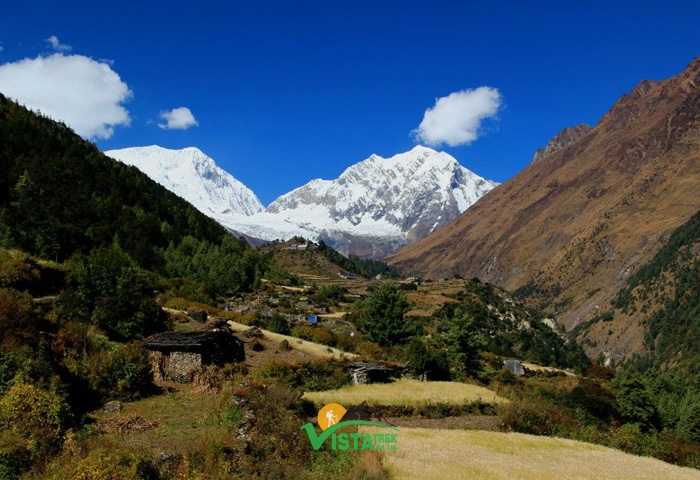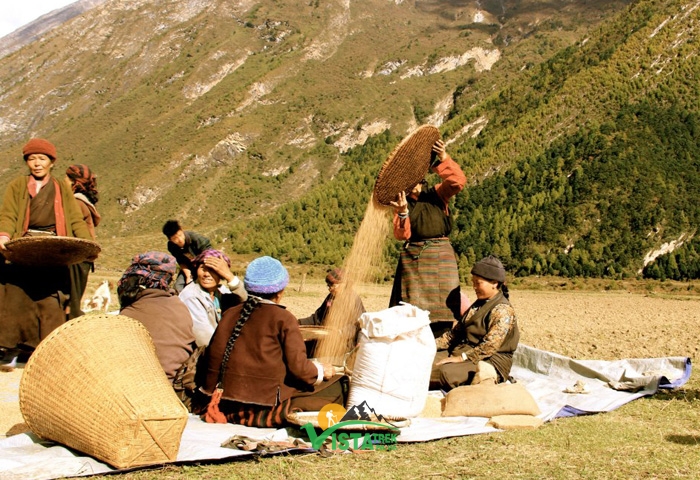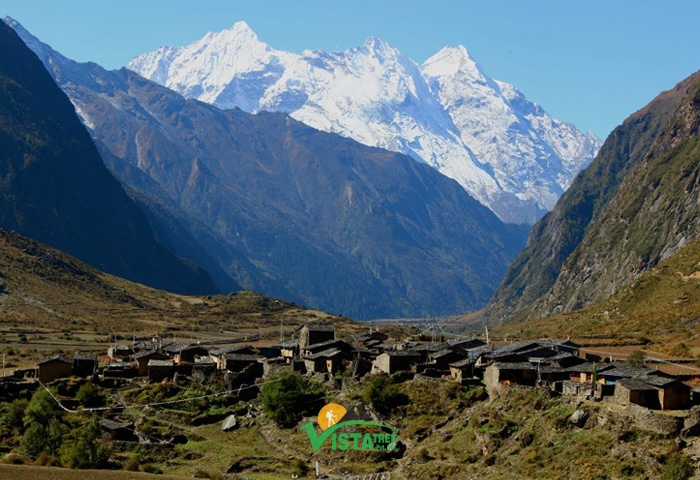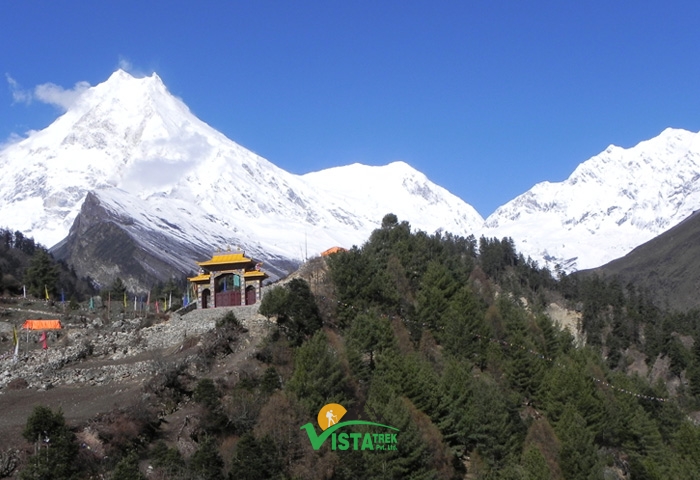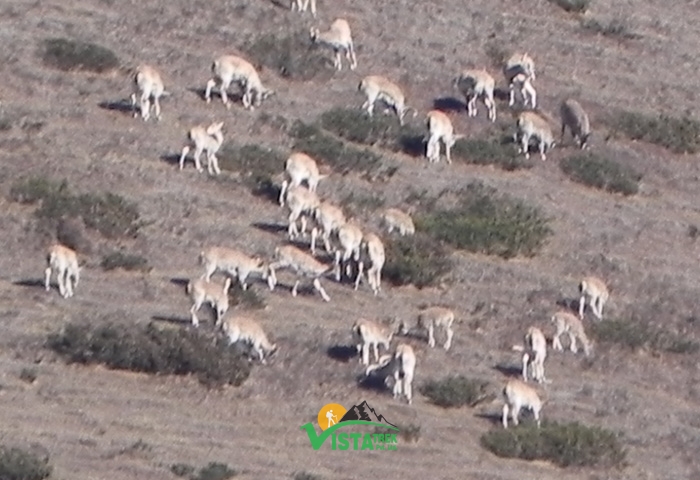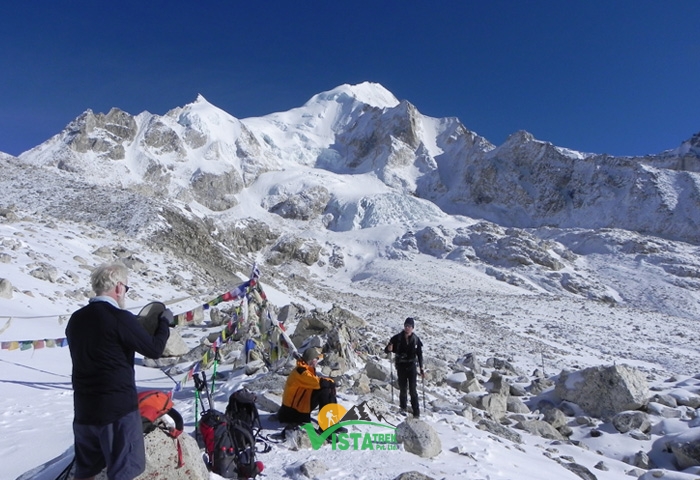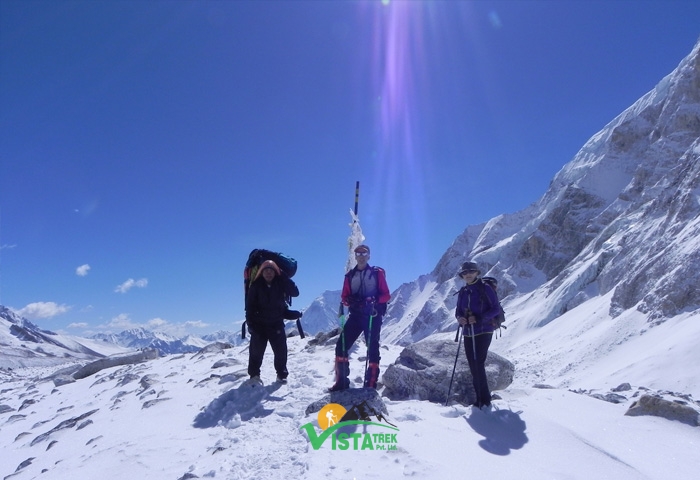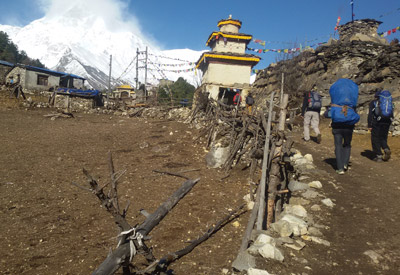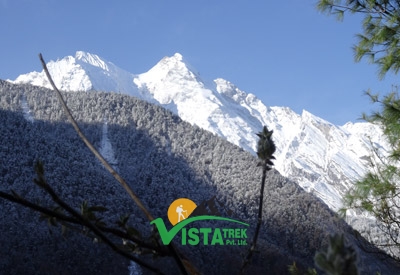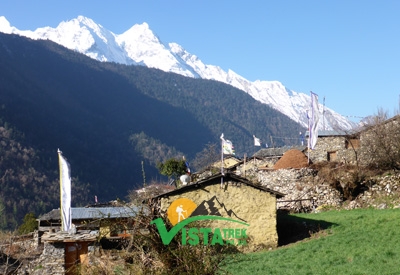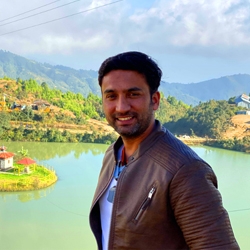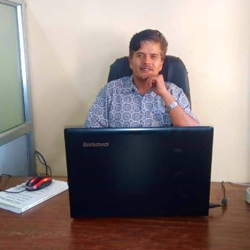Trip Facts
- Duration 15 Days
- Start FromKathmandu
- Group Size1-10 Pax
- End FromKathmandu
- Trip GradeModerate to Strenuous
- Max Height 5135 m
- AccommodationTea House
- TransportationJeep/Bus
Best Season
Sept – Nov, March to May
Trip Highlights
- Less Crowded Natural Trek in Manaslu Region
- Enjoy the views of the Manaslu and Shringi Himal ranges
- Nature delights in numerous towering waterfalls.
- Trek through the settlements of Tibetan and Nubri communities
- Cross the difficult Larkya La Pass (5160m)
Trip Overview
One of the best off-beat trekking routes in Nepal, Manaslu Circuit Trek allows you to revel in surreal Himalayan beauty. Stretching across the Mansiri Himal range, the trip makes its way through numerous Nubri villages. Likewise, the trek also entertains travelers with an array of biodiversity in the Manaslu Conservation Area. Along with the views of Mt. Manaslu (8163m), you will also cross the Larkya La Pass (5160m). All in all, the trek ensures a complete package of adventure and thrill.
The 15-Day Manaslu Circuit Trek
The 15-day Manaslu Circuit Trek begins from Kathmandu with a drive to Machhakhola. As the trail heads north along the Budhi Gandaki River, the trek takes you to Jagat and you’ll encounter thick Tibetan settlements. Passing Deng and Namrung, the culture and traditions of the Nubri communities will offer you company. Further, you will follow the Budhi Gandaki River and pass villages like Lho and Sho. Then, you head to Sama Gaon and spend a day here. Here, you can visit the Pung Gyen Monastery, Birendra Lake, or the Manaslu Base Camp.
Trekking Through the Larkya La Pass (5160m)
From Sama Gaon, you begin the second leg of the trek to reach Dharmasala. This is the final stop before making an ascent to the Larkya La Pass (5160m). The climb is difficult, but you can enjoy the stunning scenery of Manaslu, Cheo, and Himlung ranges. After completing the climb, you descend to Bimthang. Trekking in the Annapurna Conservation Area, you follow the Marsayangdi River to reach Dharapani. Finally, a drive back to Kathmandu concludes the end of a glorious adventure.
The Manaslu Circuit Trek can be combined with the Tsum Valley and Annapurna Circuit. If you wish to embark on a longer trek, you may consider the Tsum Valley & Manaslu Trek or the Manaslu Annapurna Double Circuit Trek.
Best time for Manaslu Circuit trek
The ideal trekking seasons for the Manaslu Circuit Trek are:
-
Autumn (September to November): Clear skies and mild temperatures make this the most popular season for trekking in the region.
-
Spring (March to May): Spring offers pleasant weather and is the best time for trekkers who wish to witness the blooming rhododendron forests along the trail.
-
Winter (December to February): While possible, the winter season brings extreme cold at higher altitudes, making the trek more challenging.
-
Monsoon (June to August): Avoid trekking during the monsoon season due to heavy rainfall, slippery trails, and the possibility of landslides.
Manaslu Circuit Trek Map
A Manaslu Circuit Trek map is essential for understanding the route, key villages, and elevation gains throughout the trek. Most trekking agencies provide detailed maps as part of their packages, which can be a valuable tool for planning your journey.
Short Manaslu Circuit Trek
For those who are pressed for time, a short Manaslu Circuit Trek option may be available. This typically covers a reduced section of the full Manaslu Circuit Trek, offering trekkers an opportunity to experience parts of the trek in a condensed time frame.
Trip Itinerary
- Upon arrival at Tribhuwan Intl Airport in Kathmandu, a representative from Vista Trek waiting, well in time, to receive you, shall welcome you to this land of the towering Himalayas. Once reaching your hotel in a car from the airport, all you need to do is check in and enjoy the refreshment served.
- We then visit the Vista Trek office for discussion on trekking, introduction to the guide and porter and settlement of dues if any. Since you often still have some time left for a walk around Thamel, you can do so if you please.
- Today, We obtain special trekking permit of Manaslu Region. You can spend freely in Kathmandu doing some shopping for trekking or take a Sightseeing tour of Kathmandu city to observe some of the ancient town, temples and monasteries.
- Overnight at Hotel.
- Embarking on an early morning drive from Kathmandu, we board a local bus bound for Machhakhola. The nearly 9-hour journey takes us along the Trishuli River, meandering through settlements and offering intermittent glimpses of the majestic Himalayas to the North. Our route leads us northward to Arughat, passing through Dhading Besi and Salyantar. Despite the occasional bumps, the bus makes two guaranteed stops for breakfast and lunch, concluding its journey in Machhakhola. This small settlement, nestled along the Budi Gandaki, has gained popularity as a trailhead for the challenging Manaslu Trek, rivaling Sotikhola in recent times. Machhakhola offers increasing comfort in accommodation services, although attached bathrooms are not to be expected; however, showers are available.
- Machhakhola, dominated by Gurung influences, presents a clustered landscape, a stark contrast to the open expanse of Lapubeshi. Here, on the third day, we rest for the night, immersed in the unique charm of this Gurung settlement.
- After breakfast, we walk for nearly two hours to Tatopani. Passing through an uttis-bamboo forest, dense mostly but thinner at places, the first two hours or so to Khorlabeshi is mostly flat with gradual uphills at places. This forest is home to many animals including the black-face-white-fur Langoors, white-on-the-tail but brown-overall deer as well as the kalij pheasant, the ones we are very likely to encounter. The trail also happens to run along the banks of Budi Gandaki with no roads in view. Arrival in Khorlabeshi and it’s time for a tea break. The next hour and a half’s walk on a similar route and we reach Tatopani, our stopover for lunch. Hot springs with only showers for now are what keep many indulged for some time.
- After our time in Tatopani, we walk again for nearly two hours to Dovan. Up a comfortable uphill and through a landscape similar to the ones before, the route now reaches Dovan, a small village with only a few constructions. One highlight of this small village is a primary school, where children from other villages nearby such as Ueeye, which is about two hours’ uphill even for the trained legs of the locals, come to attend classes.
- We walk again for the next two hours to Jagat. The trail, mostly flat with short uphills at places, is located in a place where the weather is cooler than before. The forest now gradually becomes thinner and thinner. Jagat, a big village on the banks of Budi Gandiki, also happens to be the check-point for permits.
- We spend the night here.
- After breakfast, we walk for around two and a half hours to Philim. The route from here on is first an hour of almost flat trail to Salleri, then a gradual uphill. With the gradual loss of forest in the area, the path turns steep for the next half an hour or so before finally leading to Philim, surrounded by big hills and relatively open. The infrastructure also includes a high school, some clinics and a helipad. It is not only the coolness that attracts many but also the view of Mt Siringi close in front to the North. We stop for Tea here.
- After a Tea break, we walk for about 3 hours to Pewa. Mostly straight, the route chooses to turn left for this journey to Dang and leaving the oneon the right that goes to Tsum Valley.The forest re-emerges once again and slowly becomes dense. Pewa, with only two service providers for trekkers, is our stopover for lunch at a riverside restaurant.
- After lunch, we walk again for around two and a half hours to Deng. This gradual uphill easy on the legs sees the forest very gradually thinning out, changing to a pretty terrain after around 2 hours. Deng is a small village of only around a dozen structures. Providing basic accommodation facilities such as a normal hotel or a lodge with showers, the place exhibits noticeable change in cultural practices, now with a distinct Tibetan feel which continues from here on.
- After breakfast, we walk for about 3 hours to Lho. The trail is mostly uphill but steeper than before and more open. Lho, a medium-sized village, is where we stop for lunch.
- After lunch, we walk again for another 3 hours to Namrung. After an initial straight route for about half an hour, the trail turns uphill, very steep and through a very dense forest, filled mostly with huge trees of Salla and rhododendrons. Namrung with six guest houses as of January 2016, is also a check post. Playing cards even for fun purposes is restricted in the area except on Saturdays and the law of this land is applicable to even the tourists.On hire for personal transportation purposes are the yaks, mulesand horses.
- We spend the night here.
- After breakfast, we walk for about 3 hours to Lhi. The route is straight for an hour or so before going round a hill. With the Ganesh Himal Range to the back, Mt Siringi to the right coming closer and closer and, in the next 20 odd minutes, Mt Hiunchuli joining the view in front, the walk to Lhi continues. As the Ganesh Himal Range slowly disappears from the back, the path turns into a few short sharp uphills. With the forest giving way to farmland, the landscape suggests the arrival of Lhi, a village with a monastery. Lhi offers a view that includes Siringi Himal, the Pangboche Peak, Himalchuli, a glimpse Mt Manaslu as well as the Naike Peak.We stop for lunch here.
- After lunch, we walk again for another 3 hours to Sama Gaun. A sharp uphill continues for 2 hours before arriving in Shyala. The view from Shyala has the whole of Manaslu Range up close. Another one hour of straight trail easy on the legs takes us to Sama Gaun.The village, the biggest so far, is a fully functional town with most facilities:big monasteries, a high school, a much better health post. There are no major roads, however. The use of mules and yaks for transporting goods is common here.
- A walk around the village, an inspection into the local way of animal husbandry dominated by yaks, some shoppingof local goods and an hour’s hike to the Birendra Lake fed by the Manaslu glacier are the activities favoured by most resting for acclimatization here.
- For those interested as well as physically very fit and after a day of acclimatization, a grueling climb of 5 hours to the Manaslu Base Camp (5,400 metres) with a steep downhill for 3 hours as the walk back is what comes as one more challenge to test their endurance. As there aren’t any settlements on the way, this venture requires those willing to carry everything including food and water. This is an adventure with risks and sees a rapiddecline in vegetation the way up. Once in MBC, it is the Manaslu Glacier and the Manaslu Peakare what attract attention. This addition, however, calls for one more rest day.
- After breakfast, we walk the whole way to Samdhu. With no settlements on the way, theslight uphill, a lot easier on the legs, turns steep in its final 20 minutes or so.After about half an hour,most of the mountains slowly disappear from sight as Pangbuche Peak takes over.The vegetation too becomes alpine, with only shrubs and grasses. Samdhu, a village with slightly more than a hundred households, is a place where potatoes are one of the only few produce possible in the area. After lunch, the very strong also choose to walk to the viewpoint from the top of the Samdhu hill, a walk of around three hours up a very steep uphill.
- Spend the night here.
- After breakfast, we walk all the way to Dharmashala. Along bare hills and towards rocky elevations, the route is a mix of steep and gradual uphills. Dharmashala, a stopover with only one construction that accommodates 35 people, is where we stop for lunch as well as for the night. The place also comeswith dormitory-style big tents, which often feels warmer than the rooms and accommodates 120 people maximum in peak season.For some, the thinning of the air now starts taking its toll.
- Spend the night here.
- Early morning, before 5 am, we start walking for about four and a half hours to Larke Pass.We start off with a cup of tea or coffee along with a bowl of hot soup.Starting early allows people to avoid the fierce cold wind once in the Pass.Although the route, a combination of some steep and gradual climbs, is a relief for many, the altitude makes things difficult, affecting even the appetite in many.As the landscape turns more barren and rocks and their debris take over, only a few mosses and lichens are able to continue the struggle for existence.Once atop the Pass, the abundance of prayer flags indicates the respect people hold for the place.It takes about half an hour to cross the Pass, which is also the border that enters Manang District.
- After crossing the Pass, a long gradual downhill awaits everyone.After half an hour, Larke Peak closes in, Pongkir Peak and the top of Annapurna I are the ones to follow, further down half an hour, Pongkir Lake joins the view. We have our lunch here. With the landscape now allowing some vegetation,the route enters Bhimthan, a stopover specially designed for trekkers and now has around 60-65 hotels. Theview the place offers is the East Manaslu Range to the right. Naike Peak to the South and Hiunalchuli Range to the North.
- Spend the night here.
- After breakfast, we walk for about almost 4 hours to Surki. With very narrow footpaths on edges at places, the trail walks us through a big forest down a gradual decline with Mt Manaslu to the left.Surki is a small village with around only half a dozen houses, now also serves through its teahouses, highlighting the impact of tourism on economic activities even in the remote parts of the world;
- From Surki, it’s two hours more to Goa. The route is similar to the one previous; but the forest slowly becomes thinner as human settlements encroach land for their purposes.The view therefore changes with the landscapenow filled with farmlands of maze or wheat or potatoes and clustered houses. Goa, a relatively new settlement with 50-60 constructions encouraged by trekking to add necessary value, is situated on an ideal location as a view point for the whole Manaslu Range.In the past, Tiliche and Dharapani were the two most preferred stopovers.
- After breakfast, we walk for about 3 hours to Dharapani. A downhill easy on the legs, the way walks everyone through either hills with grasses, shrubs and sparsely populated trees or farmlands or villages; Dharapani, on the highway to Manang, is our stopover for lunch. Entering the Annapurna Conservation Area from Manaslu Conservation Area againrequires a permit; and this is the check-point.
- After lunch, we head off to Beshisahar on a local transportation. Beshisahar, a small town with Gurung dominance, has grown in popularity as a trailhead for Annapurna Circuit Trek since the 1990s.
- Spend the night in Beshisahar.
- We head off to Kathmandu on a local bus early morning. Along the banks of the famous Trishuli and Marshyndi river, this almost 6-hour journey takes all its passengers on a ride, albeit with some bumps here and there, through numerous important settlements. With guaranteed two stops for breakfast and lunch, the bus ride comes to its final stop in Kathmandu.
- In the evening, allow us the pleasure of your company during the fare-well dinner organized by Vista Trek.
- Spend the night in a hotel.
- If you have a morning flight, we leave for Tribhuwan Intl Airport early morning in a car arranged by thecompany.
- If your flight is in the late afternoon or evening, only your WILL shall dictate your involvement or indulgence as you may please before leaving for Tribhuwan Intl Airport in the vehicle.
Cost Includes
- Pick up and transfer by car from Airport-Hotel-Airport.
- 4 nights standard hotel accommodation.
- Breakfast, lunch and dinner during the trek.
- Local lodges accommodation during the trek.
- Government licensed guide,plus experience porter ( including their food, salary, accommodation, equipment, medicine & insurance).
- All local transportation by bus as per the itinerary.(Jeep driving from Arughat to Sotikhola, Dharapani to Besisahar, and bus from Besisahar -kathmandu)
- All necessary permits and entry fees including Trekking permit to Manaslu.
- Medical kit box.
- Rescue assistance.
- All government taxes.
- Necessary equipment (sleeping bags, down jackets etc. if needed).
- Our service charge.
Cost Excludes
- Meals in Kathmandu.
- International airfare.
- Nepal entry visa fee ($40).
- Your travel insurance (should include your medical and rescue).
- Any personal expenses.
- Any kind of hot & Cold drinks
- Staff & driver tipping.
Trip Map
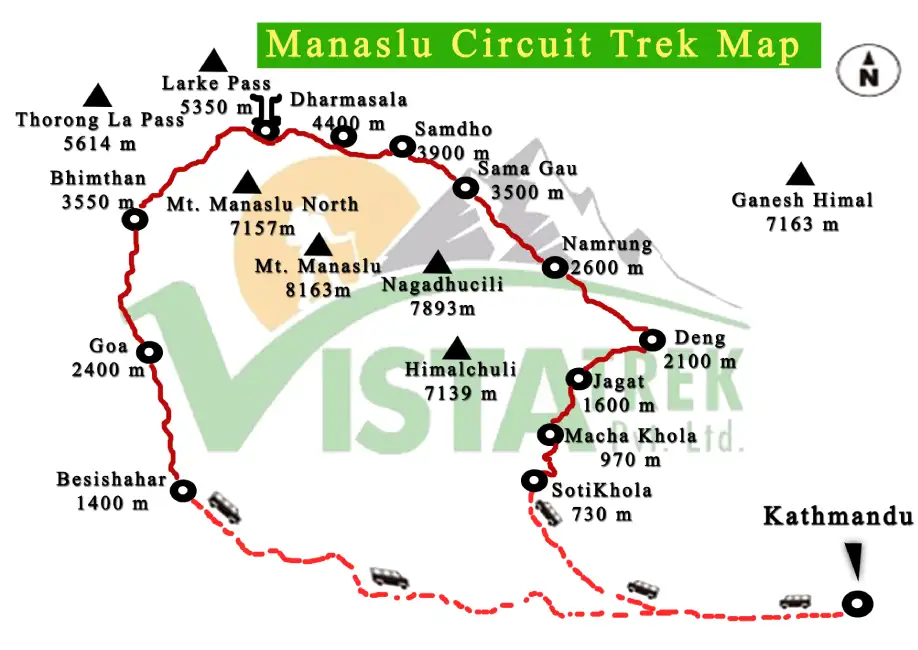
Useful Info
About Accommodation.
During your Manaslu Circuit Trek, we aim to ensure your comfort. Here’s a breakdown of the accommodation:
-
Kathmandu: In the capital city, we’ll accommodate you at Hotel Sapana Garden or a similar standard hotel. These hotels offer comfortable rooms with all basic amenities.
-
On the Trek: Local lodges provide accommodation on a twin-sharing basis. The rooms are simple, clean, and comfortable, with shared toilet and shower facilities. In the busy months (October/November & April/May), some villages have a limited number of lodges, so you may need to share a room with another traveler.
-
Pokhara: After completing your trek, your stay in Pokhara will be in hotels that also offer private bathrooms for your convenience.
Tip: During peak season, it’s always good to be prepared for shared accommodations due to the high demand for rooms.
Meals During the Manaslu Circuit Trek
Meals are an essential part of your trekking experience. You can expect a wide variety of meals to suit your taste and dietary preferences:
-
In Kathmandu & Pokhara: Only breakfast is provided at the hotels. However, you will find a range of restaurants around town serving delicious local and international cuisine.
-
On the Trek:
-
Breakfast & Dinner: Served at the teahouses where you stay overnight. You’ll enjoy traditional Nepali food like dal bhat (lentil soup with rice) and a variety of international options such as continental, Italian, Indian, and Tibetan dishes.
-
Lunch: Provided at the teahouses along the trail while trekking to the next destination.
-
-
Vegetarian and Vegan Options: Nepal offers a wide variety of vegetarian and vegan options. Whether you’re looking for local veggie dishes or international cuisine, you’ll find plenty to enjoy.
About Staff:
To ensure your trek is safe and enjoyable, you will be accompanied by experienced staff:
-
Guide: A professional and knowledgeable guide will lead you throughout the trek. For groups of more than 8 trekkers, an additional guide will be provided.
-
Porter: A porter will carry your bags, typically between 15-20 kg. The porter will assist 2 trekkers at a time, ensuring that you can trek comfortably without heavy loads.
About Equipments
Packing the right gear is essential for a successful trek. Here’s the recommended equipment list for the Manaslu Circuit Trek:
-
Clothing: Down Sleeping Bag, Down Jacket, Long-Sleeved Shirt, Fleece Jacket, T-shirts, Trekking Boots, Comfy Shoes, Woolen Socks, Cotton Socks, Thermal Wear.
-
Accessories: Sun Hat, Woolen Hat, Gloves, Raincoat, Sunglasses, Flashlight with Extra Batteries.
-
Essentials: Day Bag, Water Bottle, Sewing Kit, Swiss Army Knife, Towel, Toiletries.
-
Health & Safety: Medical Kit, First Aid Kit, Lip Balm, Sunblock.
-
Other Gear: Gaiters, Trekking Poles (optional), Camera, and Power Bank.
Manaslu Circuit Trek Difficulty
The Manaslu Circuit Trek difficulty can be considered moderate to difficult due to the high altitude, including crossing the Larkya La Pass (5160m). While the trek offers breathtaking views and rich cultural experiences, it also requires good physical fitness, especially for trekkers who may not be accustomed to the high altitudes.
Physical Fitness and experience
The Manaslu Circuit Trek is considered a moderate to challenging trek. It’s suitable for trekkers who are in good physical condition and have the ability to walk 5-6 hours per day. Some days may require trekking for 7-8 hours.
-
The trek involves high altitudes, so physical fitness is essential.
-
Prior to the trek, it’s advisable to do some physical training to prepare your body for the demands of the journey.
-
No technical skills are required, though previous trekking experience will be helpful.
-
Health Considerations: If you have any medical conditions, especially related to heart, lungs, or blood pressure, please consult your doctor before trekking.
About Insurance
It’s essential to have travel insurance that covers emergency evacuation, medical expenses, and trekking activities. Ensure your insurance policy covers altitudes up to 5,160m (Larkya La Pass), as some policies only cover up to 4,000m.
-
Check: Always confirm with your insurance provider to ensure your policy covers trekking and emergency evacuation.
About Manaslu Circuit trek Permits
The Manaslu Circuit Trek requires Special Trekking Permits (Manaslu Conservation Area Permit, and Annapurna Conservation Area Permit) and a Manaslu Restricted Area Permit, which need to be obtained before starting the trek.
Best Seasons for Manaslu Trek
-
Spring (March to May) and Autumn (September to November) are the best seasons for trekking the Manaslu Circuit. The weather is moderate, and the views are stunning.
-
Winter (December to February) is possible but can be challenging due to extreme cold temperatures at higher altitudes.
-
Monsoon (June to August) should be avoided due to the heavy rain and slippery conditions.
Bus Travel and Road Conditions
Nepal’s highways are generally safe for travel, but disruptions can occur due to landslides, strikes, or political issues.
-
Bus Travel: In rare cases, transportation may be delayed or canceled, which can affect your itinerary.
-
Recommendation: We advise adding a few extra days in Kathmandu to account for possible delays.
-
Activities in Kathmandu: If your trip proceeds smoothly, you can explore sightseeing, white-water rafting, jungle activities, or more in your extra days.






